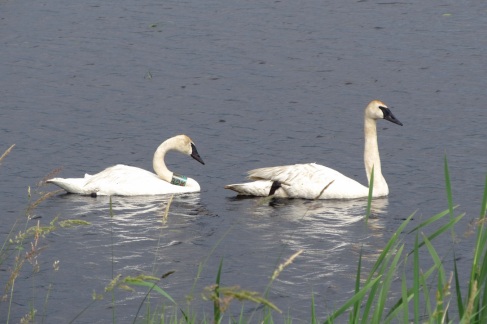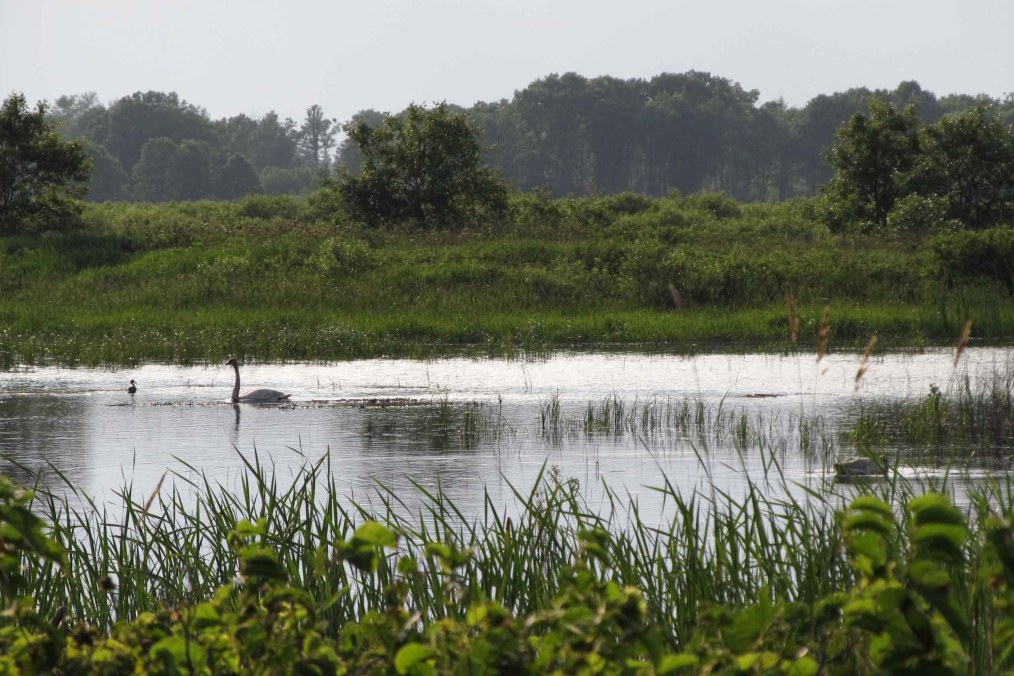
This is Kirtland’s Warbler, one of the most critically endangered bird species in North America. This is also the story of how Smokey the Bear drove this little guy and all of his friends to the brink of extinction, and how some forestry experts, wildlife biologists, and cowbird murderers are bringing them back.

Kirtland’s is a habitat specialist – it won’t nest just anywhere. It prefers dense stands of young jack pine trees (like the ones in the picture above), between 5 and 20 feet tall. When the trees get too tall, the habitat is no longer suitable for this warbler, and it can no longer breed successfully. For eons, this habitat type was constantly being regenerated by the natural forest fires that periodically swept north-central Michigan and the rest of the upper midwest. But 20th Century forest practices all but put an end to natural fire here. As people moved in, they demanded that fires be suppressed to protect homes and timber interests. They also cleared land for houses, towns, and agriculture. As a result, appropriate nesting habitat for Kirtland’s Warbler began to dry up.

Compounding this problem, the opening of the forest made this area more attractive to Brown-headed Cowbirds, a native species of blackbird. Cowbirds are brood parasites; that is, they don’t make their own nests and raise their own chicks. Instead, a female cowbird will dump an egg into the nest of another songbird when the nest is temporarily unattended. The baby cowbird often hatches first, and is bigger and more aggressive than the host babies. As a result, the begging baby cowbird successfully monopolizes most of the food the songbird parents bring back to the nest. The other nestlings typically starve to death, or are actually pushed out of the nest by the baby cowbird.
In the 1970s, with cowbirds parasitizing about 75% of Kirtland’s nests, and their habitat nearly gone, the warbler almost disappeared altogether – maybe a few hundred of them survived in the late 1970s and early 1980s. But once wildlife officials figured out what was happening, an ambitious plan was put in place to rescue Kirtland’s Warbler. Fire and logging was used to clear out mature forest, and young jack pines were planted in its stead.

Cowbirds were trapped and removed from the nesting areas, using these rather ingenious cages. A wire mesh cage is set up, and “baited” with live captive cowbirds and millet seed. Since cowbirds are a flocking, gregarious species, wild cowbirds see their buddies hanging out and eating seed, and come in to see them. Slots in the top of the cage allow cowbirds to drop into the cage, but then they can’t figure out how to get back out. The traps are checked every day, and the new wild cowbirds are “destroyed” (as one wildlife worker told me).
The plan is working, and the most recent census figures show that there are now a couple thousand Kirtland’s nesting here. A few of them have also been spotted nesting in neighboring areas in Wisconsin and Ontario. Kirtland’s is not out of the woods yet – there are still many on-going challenges to its survival, both here and on its wintering grounds in the Bahamas. But the population is certainly headed in the right direction.

I was very excited to see Kirtland’s Warbler. Of the more than 50 species of regularly occurring warblers in North America, it was one of only two that I haven’t seen yet. So I knew that this trip was going to be special. But I was unprepared for how, well, charismatic these little guys are. Unlike many warblers, they are not shy and skulky, nor do they hang out in the tops of 100-foot trees. They tee up on 10-foot pines and sing their little hearts out (which is why I was able to get such good photos). And they are confiding and largely unafraid, sometimes wandering within 15 or 20 feet of you looking for bugs. I watched one perch quite close and carefully dismember a large dragonfly, carefully knocking off all of the wings, and then gulping it down. This is a day I will remember.










































